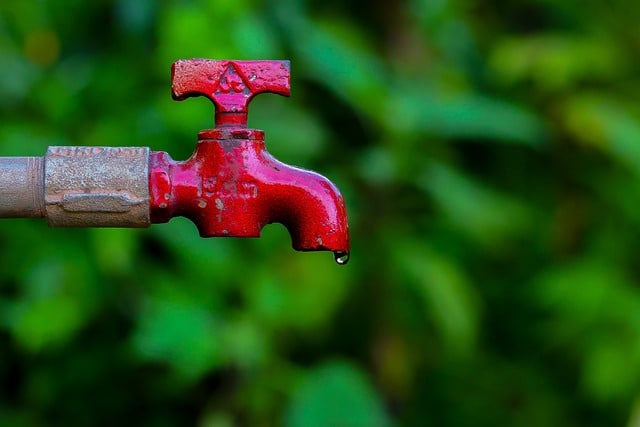In the world of maintenance management, efficiency is key. Maintenance managers juggle countless tasks daily, from equipment repairs to preventive maintenance scheduling. The right Computerized Maintenance Management System (CMMS) can be a game-changer, offering features designed to streamline operations and save valuable time.
One of the standout features of a top-tier CMMS is preventive maintenance scheduling. Instead of reacting to breakdowns, managers can proactively schedule routine maintenance tasks based on equipment usage or time intervals. This not only reduces downtime but also extends the lifespan of critical assets.
Another time-saving feature is inventory management. CMMS systems allow managers to track spare parts and supplies digitally. Automated alerts for low stock levels ensure that the maintenance team always has what they need, minimizing delays and unnecessary trips to the storeroom.
Work order management is also crucial. CMMS platforms enable managers to create, assign, and track work orders in real-time. This eliminates paperwork and confusion, ensuring that tasks are completed promptly and efficiently.
Furthermore, mobile accessibility is a game-changer for maintenance teams on the go. Modern CMMS solutions offer mobile apps that empower technicians to access work orders, manuals, and asset histories from anywhere. This flexibility means issues can be addressed swiftly, without being tied to a desk.
Lastly, robust reporting capabilities are invaluable. CMMS systems gather data on maintenance activities and asset performance, providing managers with insights to optimize workflows and resource allocation. These reports help in making informed decisions that improve overall efficiency and reduce operational costs.
Choosing a CMMS with these time-saving features is a wise investment for any maintenance manager looking to streamline operations and maximize productivity.
Streamlining Operations: Top CMMS Features Every Maintenance Manager Needs
Imagine having a tool that not only schedules preventive maintenance but also alerts you in advance, ensuring machines are serviced before issues arise. This proactive approach minimizes unexpected breakdowns, keeping operations running smoothly.
Moreover, CMMS offers a centralized database where managers can store equipment information, manuals, and maintenance history. This means technicians can access critical data instantly, saving valuable time searching for information and increasing their productivity on the job.
Another essential feature is work order management. CMMS allows managers to create, assign, and track work orders effortlessly. Whether it’s a routine inspection or a complex repair, everything is documented and monitored, ensuring tasks are completed on time.
Furthermore, integration capabilities are game-changers. CMMS can integrate with other enterprise systems like ERP or accounting software, providing a holistic view of operations. This synergy streamlines processes further, from budgeting maintenance costs to optimizing inventory management.
In essence, investing in a CMMS with these essential features isn’t just about managing maintenance tasks—it’s about optimizing workflows, reducing costs, and enhancing overall operational efficiency. With these tools at their disposal, maintenance managers can lead their teams more effectively, ensuring equipment reliability and operational excellence.
Efficiency Unleashed: How CMMS Features Revolutionize Maintenance Time
Imagine a world where maintenance tasks are not just routine chores, but streamlined processes that save time and resources. Enter CMMS, or Computerized Maintenance Management Systems, the unsung heroes of efficient operations. These systems are packed with features designed to revolutionize how maintenance is managed.
CMMS software isn’t just about scheduling repairs; it’s a comprehensive toolbox that optimizes every aspect of maintenance. One key feature is preventive maintenance scheduling. By proactively addressing issues before they escalate, CMMS prevents costly breakdowns and downtime. This proactive approach not only saves money but also keeps operations running smoothly.
Another game-changing feature is asset management. CMMS allows businesses to track and manage their assets effectively. From machinery to facilities, every asset’s lifecycle can be monitored, ensuring optimal performance and longevity. This visibility into asset health enables informed decisions about repairs, replacements, and upgrades.
Workflow automation is another highlight of CMMS. Manual tasks like work orders, inventory management, and reporting are automated, freeing up valuable time for maintenance teams. This automation reduces human error and ensures tasks are completed efficiently and on time.

Moreover, CMMS systems provide comprehensive data analytics. By collecting and analyzing maintenance data, businesses gain insights into performance trends, resource allocation, and cost-effectiveness. This data-driven approach empowers continuous improvement and strategic decision-making.
In essence, CMMS features are not just about managing maintenance; they’re about transforming it. By leveraging preventive maintenance, asset management, workflow automation, and data analytics, businesses can unleash efficiency like never before. It’s not just a tool—it’s a catalyst for operational excellence.
Time-Saving Tactics: Essential CMMS Features for Maintenance Efficiency
In the realm of facility management, leveraging the right tools can significantly enhance maintenance efficiency. CMMS, or Computerized Maintenance Management Systems, play a pivotal role in streamlining operations and saving valuable time. These systems are equipped with essential features designed to optimize maintenance processes across various industries.
One of the fundamental features of a CMMS is preventive maintenance scheduling. By automating the scheduling of routine inspections and tasks, facilities can avoid equipment breakdowns and unexpected downtime. This proactive approach not only extends the lifespan of assets but also minimizes operational disruptions, ensuring smooth business continuity.
Additionally, CMMS software facilitates asset management by providing comprehensive insights into equipment performance and lifecycle costs. Maintenance teams can track maintenance histories, monitor warranty information, and optimize spare parts inventory. Such visibility enables proactive decision-making and resource allocation, contributing to overall efficiency.
Another critical aspect of CMMS functionality is work order management. Through centralized systems, maintenance requests can be submitted, assigned, and tracked in real-time. This streamlined process eliminates manual paperwork, reduces response times, and enhances communication between technicians and supervisors.
Moreover, CMMS solutions often incorporate mobile capabilities, allowing maintenance teams to access critical information and update work orders remotely. This mobility ensures that technicians remain agile and responsive, addressing issues promptly regardless of their location within the facility.
Integrating CMMS with essential features like preventive maintenance scheduling, asset management, work order management, and mobile accessibility is crucial for optimizing maintenance efficiency. These tools empower organizations to prioritize tasks effectively, minimize downtime, and ultimately deliver superior operational performance.
Maximizing Productivity: The Key CMMS Features for Maintenance Managers
One of the key features that maintenance managers find invaluable is preventive maintenance scheduling. This feature allows managers to proactively schedule maintenance tasks based on equipment usage, time intervals, or predefined criteria. By addressing potential issues before they escalate, organizations can minimize downtime and extend the lifespan of critical assets.
Another essential CMMS feature is work order management. This functionality enables maintenance teams to create, assign, and track work orders seamlessly. Through centralized tracking, managers can monitor the progress of maintenance tasks in real-time, ensuring timely completion and resource optimization.
Inventory management is also pivotal for maintenance operations. CMMS software offers tools to monitor and control spare parts and inventory levels efficiently. By maintaining accurate inventory records and automated replenishment alerts, managers can prevent stockouts and reduce unnecessary expenses.
Furthermore, CMMS systems often include asset management capabilities. These features provide comprehensive insights into equipment performance, maintenance history, and lifecycle costs. By analyzing data-driven reports and dashboards, managers can make informed decisions regarding asset maintenance and replacements, optimizing resource allocation.
Additionally, mobile accessibility has become increasingly crucial in modern CMMS solutions. Mobile applications allow maintenance teams to access work orders, update task statuses, and receive notifications on-the-go. This mobility ensures responsiveness and flexibility in managing maintenance activities, even in dynamic environments.
In essence, the integration of these CMMS features empowers maintenance managers to enhance productivity by streamlining workflows, minimizing downtime, optimizing resource allocation, and making informed decisions based on real-time data. By leveraging these tools effectively, organizations can achieve operational excellence and maintain competitive advantage in today’s demanding business landscape.
Cutting Edge Tools: Top CMMS Features Making Maintenance Easier
Imagine a world where maintenance isn’t a headache but a breeze. Thanks to cutting-edge tools like CMMS (Computerized Maintenance Management Systems), this vision is becoming a reality for many industries. CMMS software offers a suite of features designed to streamline maintenance processes, making them not only easier but also more efficient.

One of the standout features of CMMS is preventive maintenance scheduling. Instead of waiting for equipment to break down, CMMS allows maintenance teams to proactively schedule inspections and repairs based on usage data and manufacturer recommendations. This proactive approach helps prevent costly downtime and extends the lifespan of assets.
Another game-changing feature is inventory management. CMMS systems can track spare parts and supplies in real-time, alerting maintenance teams when stock levels are low. This prevents delays in repairs due to missing parts and ensures that technicians have everything they need to complete jobs swiftly.
Moreover, CMMS software enhances work order management. It enables maintenance managers to create, assign, and track work orders digitally. Technicians receive notifications instantly on their mobile devices, reducing response times and improving overall workflow efficiency.
Furthermore, CMMS systems offer robust reporting and analytics capabilities. They gather data on equipment performance, maintenance history, and costs, providing valuable insights for decision-making. By analyzing these metrics, organizations can optimize maintenance strategies, allocate resources effectively, and drive continuous improvement.
In essence, CMMS software isn’t just a tool; it’s a transformative technology that empowers maintenance teams to work smarter, not harder. By automating routine tasks, improving asset visibility, and facilitating data-driven decisions, CMMS systems pave the way for more efficient maintenance operations across industries.
This article highlights the key features and benefits of CMMS systems in a conversational and engaging tone, aiming to inform and captivate readers interested in streamlining maintenance processes through advanced technology.
Frequently Asked Questions
What are CMMS software features?
A concise overview of CMMS software features, outlining essential functionalities such as asset management, preventive maintenance scheduling, work order management, and reporting capabilities.
What are preventive maintenance features in CMMS?
Preventive maintenance features in CMMS refer to tools and functionalities designed to schedule and manage routine maintenance tasks proactively. These features help organizations prevent equipment breakdowns and optimize asset performance by automating maintenance schedules, tracking work orders, and ensuring timely inspections and repairs.
How do CMMS features benefit maintenance managers?
Discover how CMMS (Computerized Maintenance Management System) features streamline operations, enhance asset management, and improve efficiency for maintenance managers.
Which CMMS features help save time?
Learn about the essential CMMS features that can save time efficiently. Discover how functionalities like automated scheduling, inventory management, and real-time analytics streamline operations.
How can CMMS scheduling features streamline operations?
Learn how CMMS scheduling features optimize operational efficiency by enabling precise task planning, resource allocation, and maintenance scheduling, ensuring seamless workflow management.